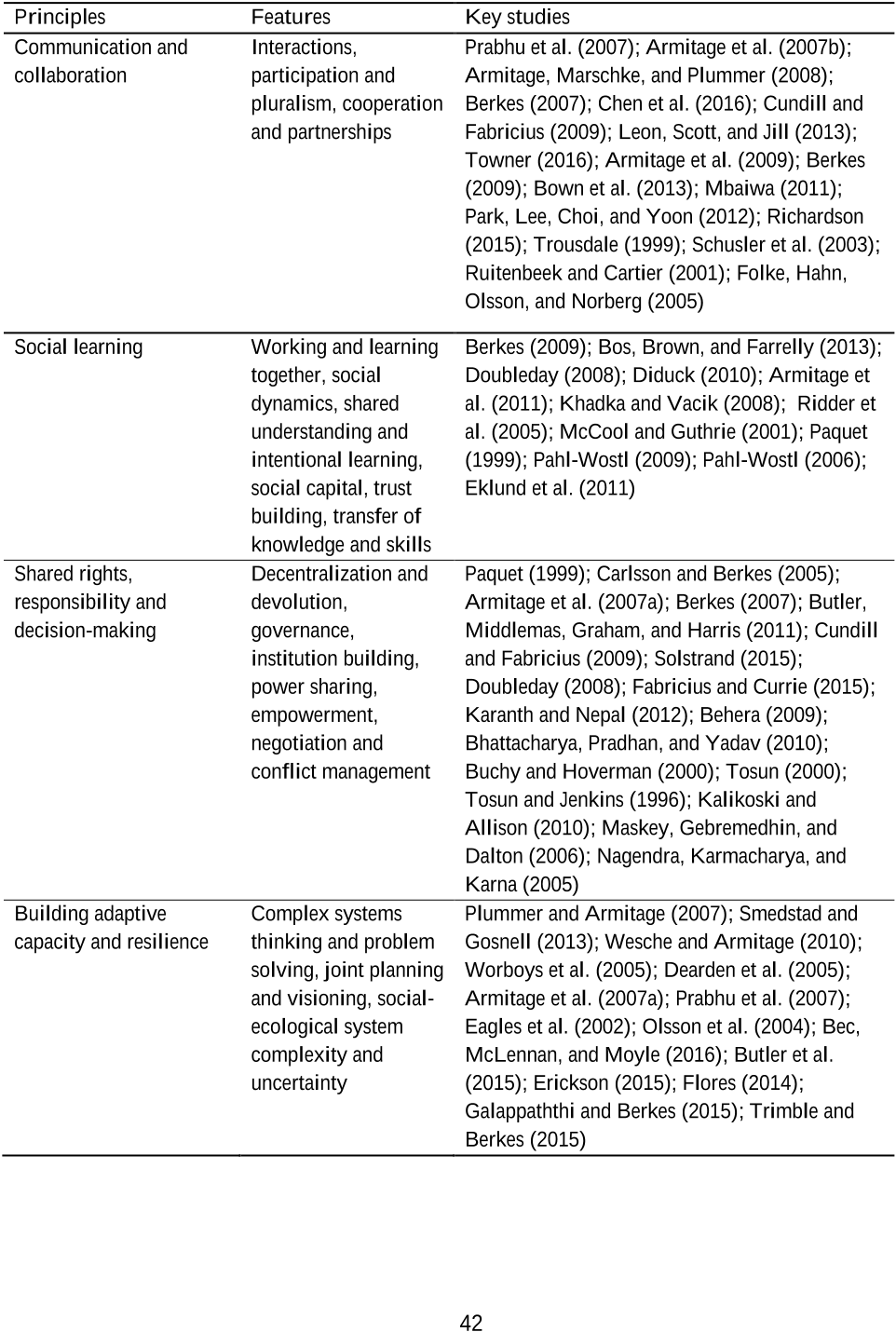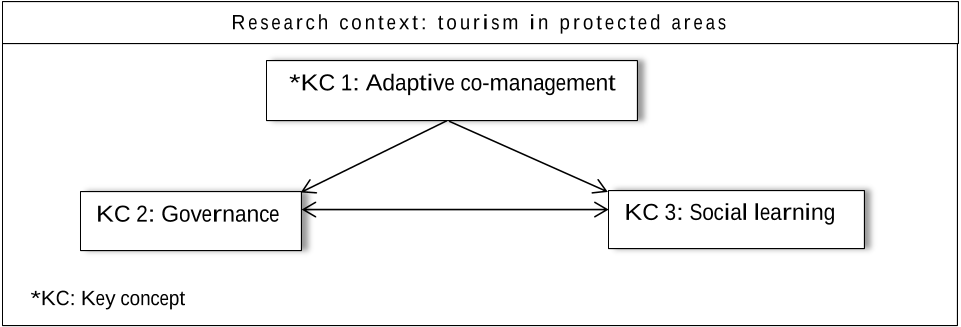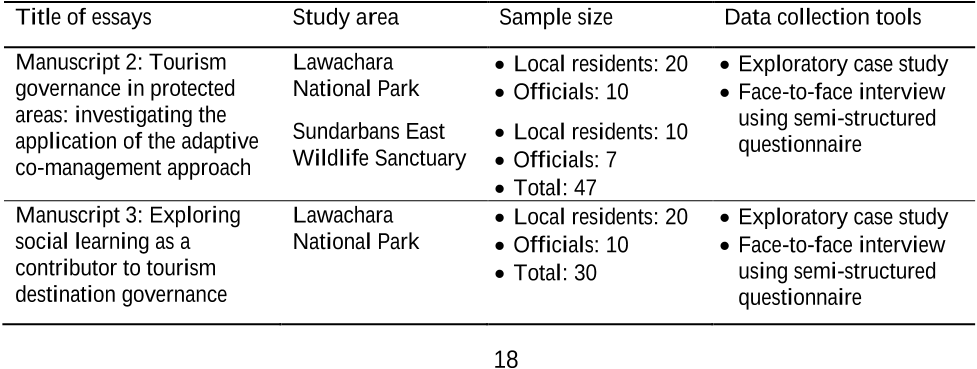ii
Abstract
Tourism in protected areas can accelerate development opportunities by providing various direct and
indirect ecological, socio-economic and cultural benefits, particularly in developing countries
(Dudley, 2008; Newsome & Hassell, 2014; Tosun, 2000; WWF [World Wide Fund For Nature],
2014). However, developing countries, and their protected areas, are often characterised by poor
governance systems that impede the development of these locations as tourism destinations and
therefore affect those (poor) people living in and around these areas (Eklund, Arponen, Visconti, &
Cabeza, 2011; Parnini, 2006). Therefore, policy or institutional arrangements are required which
promote better governance systems and enable local people to obtain socio-economic and ecological
benefits from tourism activities (Figgis & Bushell, 2007). Consequently, a paradigm shift is occurring
within protected area planning and management with a transition from traditional top-down to
participatory bottom-up approaches to ensure the participation of local stakeholders in decision-
making, planning, implementation, monitoring and evaluation, and ultimately benefit-sharing
(Eagles, McCool, & Haynes, 2002; Niedziałkowski, Paavola, & Jędrzejewska, 2012). As such, these
institutional arrangements can promote better governance systems for local communities to improve
their living standards as well as facilitating effective protected area management planning systems
(Dearden, Bennett, & Johnston, 2005).
‘Adaptive co-management’ (ACM) is a dynamic process whereby institutional arrangements and
ecological knowledge are continually tested and revised through a process of ‘learning-by-doing’
(Armitage, Berkes, & Doubleday, 2007b). ACM has been suggested as a more inclusive alternate
approach to governance which can better facilitate the management and protection of natural
resources (Armitage, Berkes, Dale, Kocho-Schellenberg, & Patton, 2011; Plummer & Fitzgibbon,
2004a). ACM has also been advocated due to the fact that it can provide a means to empower local
stakeholders and enhance collaboration with other stakeholder groups. This is achieved through more
flexible systems that encompass complex cross-scale linkages (Olsson, Folke, & Berkes, 2004;
Wood, Butler, Sheaves, & Wani, 2013).
ACM has several attributes or principles. Social learning is one of the key principles and is based on
the creation of cooperative and collaborative frameworks that can facilitate iterative learning amongst
diverse groups of stakeholders (Ruitenbeek & Cartier, 2001; Schusler, Decker, & Pfeffer, 2003).
Social learning is particularly relevant for tourism development in protected areas as tourism is
multiple stakeholder activity requiring collaboration (Haddock-Fraser & Hampton, 2010; McCool,
2009). Both ACM and social learning have only recently been explored in tourism although the


























